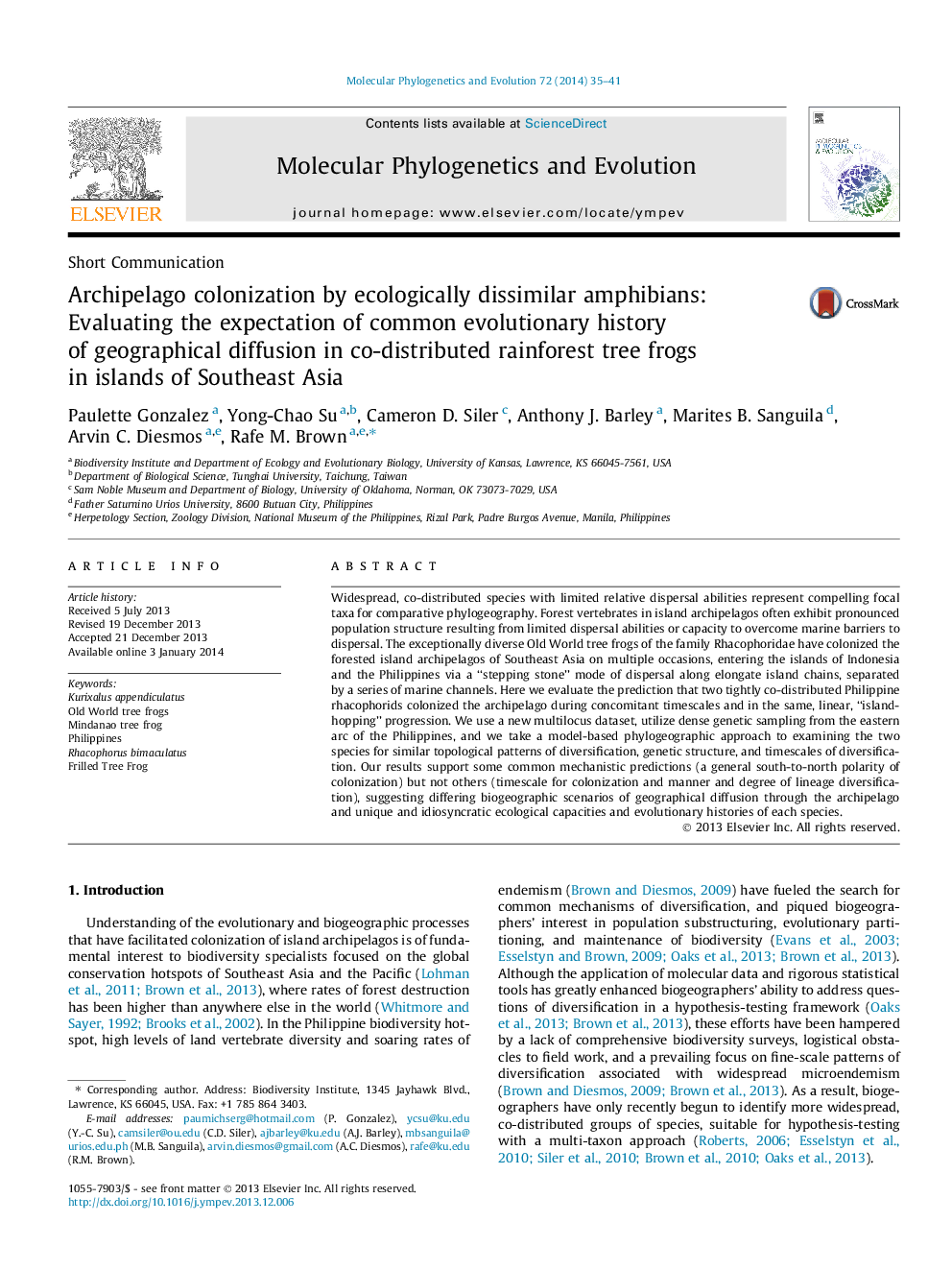| کد مقاله | کد نشریه | سال انتشار | مقاله انگلیسی | نسخه تمام متن |
|---|---|---|---|---|
| 2833864 | 1570823 | 2014 | 7 صفحه PDF | دانلود رایگان |
• Multilocus phylogeographic study of Philippine rhacophorid frogs.
• This study focuses on two Philippine clades of rhacophorids.
• Focal species are Rhacophorus bimaculatus and Kurixalus appendiculatus.
• The results reveal both common and disparate patterns of diversification.
Widespread, co-distributed species with limited relative dispersal abilities represent compelling focal taxa for comparative phylogeography. Forest vertebrates in island archipelagos often exhibit pronounced population structure resulting from limited dispersal abilities or capacity to overcome marine barriers to dispersal. The exceptionally diverse Old World tree frogs of the family Rhacophoridae have colonized the forested island archipelagos of Southeast Asia on multiple occasions, entering the islands of Indonesia and the Philippines via a “stepping stone” mode of dispersal along elongate island chains, separated by a series of marine channels. Here we evaluate the prediction that two tightly co-distributed Philippine rhacophorids colonized the archipelago during concomitant timescales and in the same, linear, “island-hopping” progression. We use a new multilocus dataset, utilize dense genetic sampling from the eastern arc of the Philippines, and we take a model-based phylogeographic approach to examining the two species for similar topological patterns of diversification, genetic structure, and timescales of diversification. Our results support some common mechanistic predictions (a general south-to-north polarity of colonization) but not others (timescale for colonization and manner and degree of lineage diversification), suggesting differing biogeographic scenarios of geographical diffusion through the archipelago and unique and idiosyncratic ecological capacities and evolutionary histories of each species.
Figure optionsDownload as PowerPoint slide
Journal: Molecular Phylogenetics and Evolution - Volume 72, March 2014, Pages 35–41
